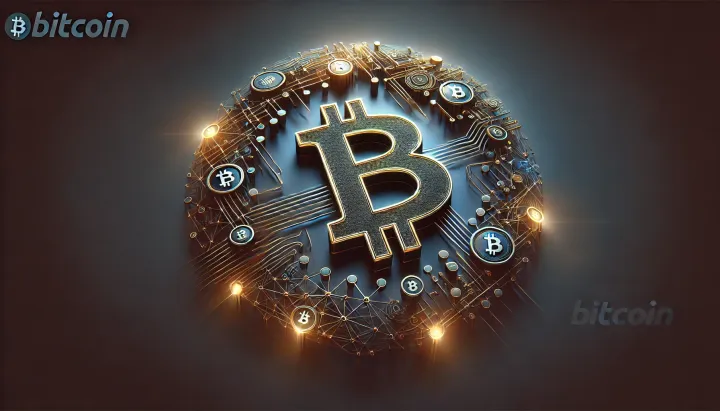Navigating Bitcoin’s Future: Consensus Risks and Institutional Influence
The November 11, 2024 episode of Coin Stories features Lyn Alden discussing the complex interplay of stakeholders and the risks of protocol fragmentation, highlighting institutional influence, governance challenges, and the debate over protocol immutability.

- My 'briefing notes' summarize the content of podcast episodes; they do not reflect my own views.
- They contain (1) a summary of podcast content, (2) potential information gaps, and (3) some speculative views on wider implications.
- Pay attention to broadcast dates (I often summarize older episodes)
- Some episodes I summarize may be sponsored: don't trust, verify, if the information you are looking for is to be used for decision-making.
Summary
The November 11, 2024 episode of Coin Stories features Lyn Alden discussing Bitcoin’s consensus model. Alden outlines the complex interplay of stakeholders and the risks of protocol fragmentation, highlighting institutional influence, governance challenges, and the debate over protocol immutability, raising questions about Bitcoin’s capacity to remain decentralized as passive institutional holdings increase. This analysis is essential for stakeholders focused on Bitcoin’s stability, resilience, and autonomy.
Take-Home Messages
- Stakeholder Complexity in Consensus: Bitcoin’s consensus requires coordination across varied stakeholders, each with unique incentives.
- Institutional Power Risks: ETFs and institutional holdings could sway governance, challenging Bitcoin’s decentralized ideals.
- Passive Holder Apathy Threatens Stability: The rise of passive Bitcoin holders, especially in ETFs, risks diminishing active governance engagement.
- Alternative Clients Pose Financial Risks: Conflicting Bitcoin clients may destabilize Layer 2 solutions, emphasizing the need for aligned governance.
- Education is Critical for Decentralization: Active education across Bitcoin’s user base is essential to preserve the network’s independence.
Overview
In this November 11, 2024 episode of Coin Stories, Lyn Alden details the intricate nature of Bitcoin’s consensus mechanisms, identifying six key stakeholder groups: economic nodes, miners, protocol developers, application developers, investors, and influencers. Each group brings unique power dynamics and incentives that affect Bitcoin’s governance. Alden explains that this multi-faceted stakeholder structure aims to secure Bitcoin’s stability while presenting risks if misaligned during protocol upgrades.
Alden distinguishes between hard and soft forks, outlining how each approach impacts Bitcoin’s resilience. Hard forks, which are backward incompatible, risk network fragmentation and dilution of value, while soft forks maintain compatibility and stability. She cites the Bitcoin Cash fork as an example of fragmentation risks and highlights how miners, developers, and large economic nodes often wield critical influence in these scenarios.
The discussion shifts to the growing role of institutional holders, particularly through ETFs, which Alden suggests may have a passive yet powerful influence on protocol changes. She expresses concerns over the apathy of these passive holders, as they may lack the incentive to engage deeply in governance debates. This shift in power dynamics could lead to governance misalignments and create vulnerabilities in Bitcoin’s decentralized governance.
Finally, Alden discusses the risks posed by alternative Bitcoin clients, which could introduce divergent rules that undermine consensus. She warns that if these clients gain traction, they may affect the economic integrity of Layer 2 solutions. Alden argues that addressing these risks requires consistent engagement and education to ensure stakeholder alignment and a resilient governance structure.
Stakeholder Perspectives
- Institutional Investors: Seek secure, compliant investments, but may inadvertently centralize influence, undermining decentralization.
- Miners: Hold significant sway in soft forks, but face potential conflicts with decentralized governance if mining pools centralize further.
- Developers: Prioritize security, with protocol developers leaning toward conservative upgrades, while application developers often seek new features.
- ETF Investors: Likely to be passive in governance, potentially shifting Bitcoin's governance toward centralized interests.
- Media Influencers: Influence public opinion and can sway governance decisions during contentious upgrades.
Implications
The increased role of institutional investors and the passive holding they bring could reshape Bitcoin’s governance landscape, affecting the decentralized ethos that underpins the network. As passive investors gain control, they may unintentionally prioritize compliance or corporate objectives over the community-driven governance model Bitcoin has traditionally maintained. This shift in power dynamics suggests the need for new governance approaches that protect Bitcoin’s decentralization, even as institutional adoption grows.
For developers and miners, the challenges of aligning diverse incentives around soft and hard forks underscore the importance of active governance mechanisms. Addressing risks like alternative clients and bounty claims will require collaborative, decentralized engagement, ensuring Bitcoin’s resilience and appeal. The broader network must consider these governance dynamics seriously to prevent centralization and ensure continued independence and security for the network’s growth.
Future Outlook
With the rise of institutional Bitcoin holdings and ETFs, Bitcoin’s future depends on balancing decentralization with the realities of growing institutional influence. Improving governance processes to accommodate these new stakeholders while keeping Bitcoin’s foundational principles intact will be essential. As Alden emphasizes, fostering greater education and awareness within the community will be critical for empowering stakeholders to make informed decisions, ensuring network resilience against risks from centralized entities and passive governance.
In the next decade, governance adaptation may define Bitcoin’s sustainability as stakeholders confront the pressures of increased regulatory scrutiny and centralization risks. Stakeholders must prepare to navigate these shifts, maintaining a decentralized network that can withstand challenges from both institutional and retail participants.
Information Gaps
- How might ETF sponsors influence Bitcoin protocol upgrades in the future? ETF sponsors could exert substantial influence on governance decisions due to their large holdings. Researching their potential impact can provide insight into future governance risks and centralization dynamics.
- How can Bitcoin’s governance structure mitigate risks of network fragmentation from contentious hard forks? Protocol fragmentation could threaten Bitcoin’s long-term stability and economic value. Examining governance mechanisms to unify stakeholders around consensus decisions could reinforce network resilience.
- What are the potential risks of increased centralization within Bitcoin mining pools? Mining pool centralization might challenge Bitcoin’s foundational decentralization. Researching incentives for decentralization within mining can help ensure that mining aligns with Bitcoin’s decentralized structure.
- How can Bitcoin improve its governance processes to better reflect the diversity of its stakeholder groups? Inclusive governance models that balance diverse incentives could stabilize Bitcoin’s long-term development. Understanding possible governance improvements will help accommodate all stakeholders’ interests effectively.
- How does mining pool centralization affect the soft fork decision-making process? Mining pools influence soft fork adoption, and increased centralization may lead to governance misalignment. Investigating this effect could reveal critical insights to safeguard Bitcoin’s decentralized governance model.
Broader Implications
Institutional Influence on Governance
As institutional investors, particularly those behind ETFs, hold increasing amounts of Bitcoin, they may reshape the governance landscape. Unlike individual holders, institutions may lack a deep-rooted commitment to decentralization, prioritizing compliance or stability over Bitcoin’s core values. This shift could lead to increased centralization, where decision-making aligns with corporate interests, potentially compromising the network’s decentralized ethos.
Risks of Fragmentation and Network Stability
Bitcoin’s consensus model faces fragmentation risks if stakeholders diverge significantly on protocol changes. Hard forks, in particular, threaten the network’s stability by creating economic splits that dilute value. To safeguard network resilience, Bitcoin’s community may need to reinforce governance structures that prevent fragmentation, ensuring a unified protocol direction that maintains economic security across the entire network.
Passive Holders and Apathy in Governance
The growth of passive Bitcoin holders through ETFs and similar vehicles could create a less engaged governance environment. This shift risks consolidating power in the hands of a few active participants, reducing diverse input in critical decisions. Engaging these passive holders in governance or designing governance frameworks that counterbalance passive influence will be crucial for preserving the decentralized decision-making that Bitcoin’s foundation relies upon.
Mining Pool Centralization and Security Concerns
Increased centralization within mining pools may impact security and undermine the decentralized control over Bitcoin’s protocol changes, especially in soft fork decisions. To counteract this centralization trend, incentivizing greater diversification within mining pools will be essential for sustaining network security and ensuring that mining aligns with broader decentralization goals. This step is particularly urgent to prevent mining pools from disproportionately influencing protocol decisions.
Education as a Safeguard for Decentralization
The podcast highlights a fundamental need for widespread education across all Bitcoin stakeholders to preserve network independence. Educating institutional holders, miners, and general investors about Bitcoin’s decentralized governance and the significance of active participation will help safeguard against centralization. Without ongoing education, passive influence could shift power dynamics toward a more centralized governance model, potentially threatening Bitcoin’s long-term sustainability.



Comments ()